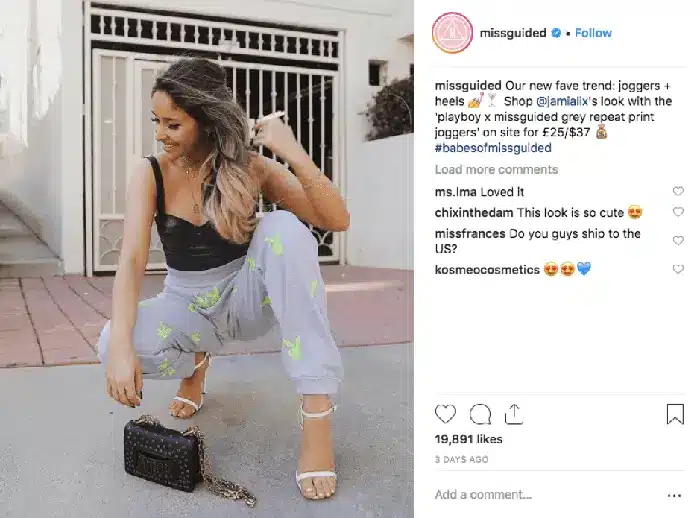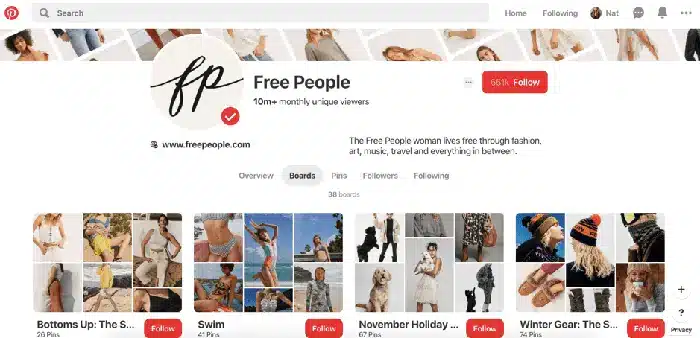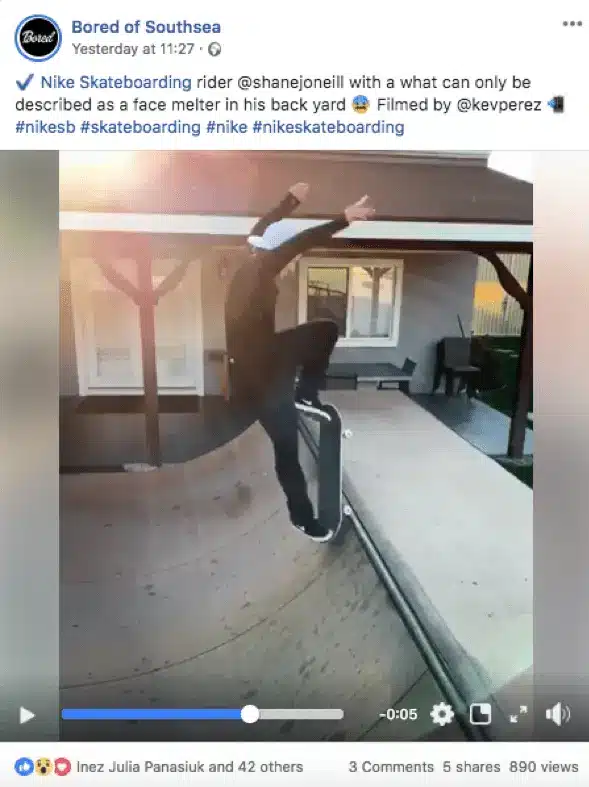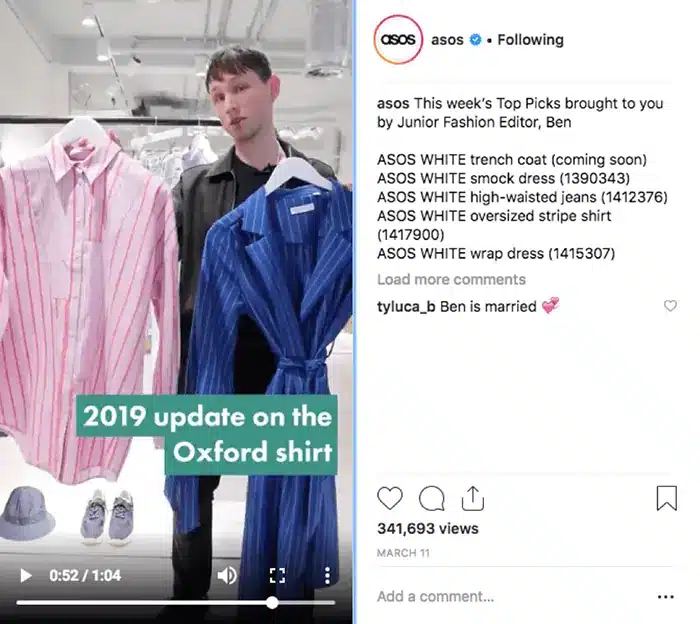6 Ways Fashion Retailers Can Leverage Social Media
Fashion and social media go hand in hand. The visual nature of the social networks combined with the aesthetic appeal of clothing and accessories blends together well.
Many online fashion retailers are already making big use of social media to enhance their brand awareness, generate website traffic and close those all-important sales.
You can too.
Social media platforms such as Instagram, YouTube and Pinterest, lend themselves particularly well for fashion brands due to having high visual appeal and a captive audience.
In this article, we discuss seven ways in which you can think about using social media to promote your eCommerce fashion brand and build the profitable business you imagined.
If one thing has taken the social media world by storm these past few years, it’s the rise of the influencer. And now, with the rise of the micro-influencer, there’s no reason why smaller fashion retail brands can’t reap the benefits too.
What is an influencer or micro-influencer?
An influencer is a person who has built up a large online community of engaged fans and followers. On the other hand, a micro-influencer has a smaller engaged following; what counts as a good number of followers depends on your goals.
A little history for you:The term influencer started life in the form of celebrity endorsements, but social media is where the term has really taken off.
No longer do fashion brands need to focus their efforts on the expensive fees of celebrities, they can target real people living real lives and still make a large profit.
In a first case scenario, many online fashion retail brands make the mistake of targeting fashion influencers with a large following.
While this is often the first sign of a good influencer, what you really want to be focusing on is the level of engagement they have.
It’s all well and good to have thousands if not millions of followers, but these statistics mean little if the influencer in question doesn’t actually have much actual influence over their community.
Instead, work out their average likes, shares and comments a potential fashion influencer has. These are actionable metrics that you can then gage the likelihood of success if you are to make a commitment to working with a particular influencer.
How does influencer marketing work?
Influencers work because they’re real people living real lives.
There is nothing stronger in the world of marketing than word of mouth. We all trust the opinions of our friends and families, and now this extends to people who we respect and follow online.
From a marketing perspective, the potential return on investment from developing relationships with these savvy social media users is pretty enticing.
But an even better thing about this is that both you and your influencer will benefit from the exchange – you’ll extend your awareness and increase your sales and your influencer will bounce off your community too.
This doesn’t mean to say influencer marketing is free.
In fact, it’s quite the opposite.
People with an engaged following often feel a certain level of responsibility to the community they have and will rarely publish anything that goes against their own views, regardless of payment.
Effective influencer marketing requires commitment.
Developing relationships with influencers requires real time and real effort.
You have to know your brand and values inside out, as well as having a deep understanding of the influencer you have in mind and how you will benefit them.
Keep in mind that most influencers have established their community through a lot of time, effort and hard work – in some cases, it will have taken them several years to create their loyal and engaged online community.
This is why it’s really important to go into influencer marketing with a planned strategy in front of you. You want this person to become a real advocate and to help your business to grow. Building a relationship for the long-term is key.
2. User-generated content.
User-generated content (UGC) and fashion go hand in hand. It acts as a word of mouth recommendation, with customers amplifying your brand by sharing photos of themselves wearing your items.
Take, for example, fast fashion giant Missguided.
Not only do they have a plethora of user-generated content across their Instagram profile, but they also utilise a common hashtag – #babesofmissguided.

This encourages their customers to upload Instagram photos of themselves in their outfits and tag the fashion brand’s hashtag for a chance to be shown across Missguided’s social media platforms.
Another benefit of using a hashtag is that it provides a quick and easy way for a brand to filter photos that include their products, which can be necessary on social network sites as they tend to be saturated with millions of images.
What’s more, these tagged photos also serve as a means of social proof for potential buyers. If any customers are in doubt as to whether to make a purchase, they will be able to identify with real people wearing your products, increasing the likelihood of them making a purchase.
If you’re new to the fashion and social media scene, consider running a competition to get these user-generated snaps to use across your social networks, brighten up your newsfeeds and increase your overall online engagement.
3. Consider your opportunities with Pinterest.
As a visual search engine, Pinterest is centred on the pinning of striking visuals on virtual boards and is perfect for fashion brands to promote their products on.
Online fashion brand Free People uses the social platform to pin and categorise their boards by product type, while high street fashion retailer New Look takes a broader approach and creates varying trend boards.

While you can’t buy products directly through Pinterest (unless you sell via Etsy), you can create links for each of your images to link back to a specific product’s page.
Think of Pinterest as being good for brand awareness more so than responsible for direct sales and website traffic.
4. Use Twitter and Facebook for customer service.
Social media can be a great way to offer customer service for fashion brands. Specifically, we are talking about Twitter and Facebook here.
Consider opening a separate Twitter account so that you can deal with customer complaints and monitor social media comments in a more direct fashion.
For example, online fashion retailers such as ASOS and Missguided have separate accounts so that they can deal with the influx of customer comments that they receive on a daily (if not hourly) basis.

This can also be a good way to limit negative social media brand mentions on your main brand’s Twitter account, which could potentially impact your sales count.
If your online fashion brand is less well known and has a much smaller following, then consider how you can leverage a platform such as Facebook to respond to issues that your customers bring to light.
As a business, you should try and provide an outstanding customer experience across all social media channels and respond to every brand mention that you receive across your active social networks.
This is not only great for customer service, ensuring that both your existing and potential customers are satisfied with your service, but by being fun and casual, you avoid coming across as dull and corporate, and have the chance to showcase your brand’s personality.
Find out seven ways that you can use social media for customer service for your business, so that you can form strong customer relationships and improve your provision of customer care.
5. Social shopping.
While social media channels are still mostly used as a way to drive website traffic, some platforms now have the capabilities to enable social shopping.
Social shopping allows social media users to make purchases directly from the social media platform rather than having to go to a retailer’s website, which in turn reduces the customer’s path to purchase.
Although images are commonly used to enable this type of online shopping (such as through Facebook), many retailers are also using video as a direct sales channel, which sees shoppers purchasing directly from YouTube.
Whether you go down the route of leveraging video, setting up a Facebook store or posting your products on Pinterest, there are huge opportunities to enhance your customer’s experience and to generate more sales for your retail business.
Find out how to set up a Facebook store and take your business to the next level.
6. Diversify your content with video.
Video is on the rise in every industry. For fashion retail brands, the opportunities that you have with the use of visual media are huge. For starters, you could look at using YouTube to promote your products or showcase your brand’s story.
For instance, ethical fashion brand People Tree promotes videos to do with transparency of their supply chains and partners as well as seasonal highlights, which in turn promotes their brand and accompanying values as a Fairtrade brand.
It doesn’t all have to be product-centric when it comes to fashion though.
In fact, leading men’s online skate wear store, Bored of Southsea, peppers in clips of skateboarders to spice up their Facebook newsfeed and increase engagement with their customers and fans on the social media network.

By aligning your online fashion business with alternative visual activities (e.g. skateboarding or outfit showcases) that complement your brand, you’ll move away from being purely product-centric which can be great for increasing engagement and starting conversations on a variety social media platforms.
And it’s not just YouTube and Facebook that work well with video content.
More and more fashion retail brands are leveraging the likes of Snapchat and Instagram videos. These tend to be short videos that last no more than a few seconds to a minute but add diversity into the content that is rolled out.
For example, ASOS leverage video on Instagram to pop out weekly videos of their top picks for particular items.

The great news for fashion brands is that clothing lends itself well to video and you could replicate this idea easily for your own retail business.
Get social and win sales.
Social media is a powerful tool for online fashion retailers. As an important customer touchpoint for your digital venture, it can help build awareness, drive website traffic and even generate sales for your business.
By following our tips and best practices, you can ensure that you are expanding your presence, and start maximizing the growth of your business.
Have you tried and tested any of these social media tips? Perhaps you’ve got a new one up your sleeve? Share them with us in the comments below.
Of course, testing and optimizing your marketing initiatives can be a very time-consuming process. That’s why it makes sense to automate as many of your selling processes as possible, such as through an inventory management system, so that you have more freedom to grow your business and increase your sales.
Want to skyrocket your sales? Download our guide on 51 ways to grow your eCommerce business – it’s filled with marketing ideas to help you raise brand awareness, engage audiences and drive website traffic.